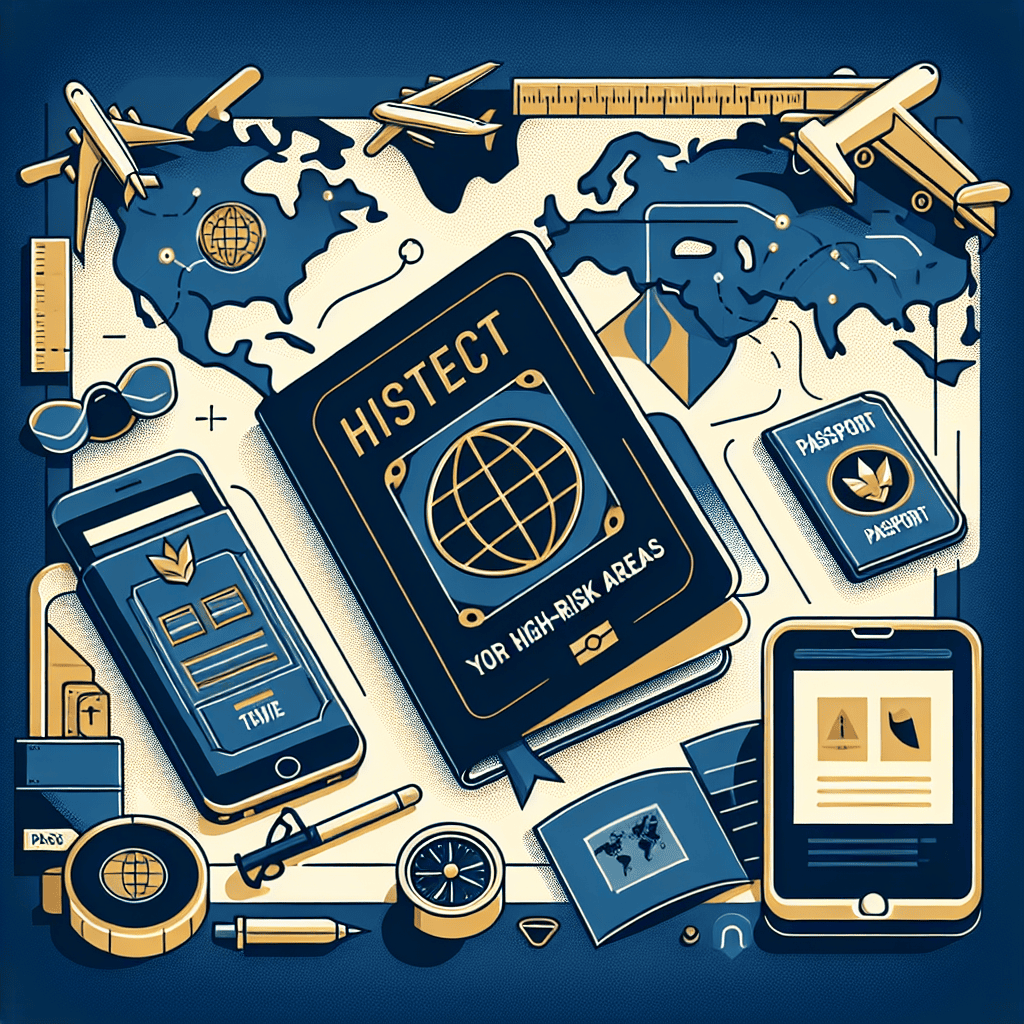
How to protect yourself in high-risk areas

Mr Passport
How to Protect Yourself in High-Risk Areas
As solo travelers, we're always on the lookout for ways to stay safe while exploring new destinations. We've all been there - wandering through a bustling market, lost in a foreign city, or just plain exhausted from a long day of sightseeing. It's easy to feel vulnerable, especially when traveling alone.
I'll never forget my own experience in Marrakech, Morocco. I had just arrived in the city and was eager to explore the vibrant souks (markets). As I wandered through the crowded alleys, I got lost and disoriented. Suddenly, a group of locals approached me, speaking quickly in Arabic. I panicked, unsure of what to do.
Luckily, my friend, who had been with me earlier that day, stepped in and helped translate for me. We were able to find our way back to the hotel together, but it was a scary moment that taught me to always prioritize my safety when traveling alone.
That's why we're here today to talk about how to protect yourself in high-risk areas. Whether you're exploring a bustling city or trekking through remote wilderness, it's essential to know what to do to stay safe.
Key Points
| Destination | Safety Concerns |
|---|---|
| Southeast Asia: Petty theft and scams common | |
| South America: Crime and violence in some areas (e.g., Rio de Janeiro) | |
| Africa: Scams, petty theft, and terrorism concerns |
Understanding Your Risks
Before we dive into practical tips, it's essential to understand the safety risks associated with different destinations. Research your destination thoroughly and stay informed about local conditions. Consider the following factors:
- Crime rates and types (e.g., petty theft, violent crime)
- Terrorism threats
- Health concerns (e.g., malaria, cholera)
- Natural disasters (e.g., earthquakes, hurricanes)
Practical Tips for Solo Travelers
Here are some practical tips to help you stay safe in high-risk areas:
- Stay informed: Register with your government's travel advisory program and stay up-to-date on local conditions.
- Be aware of your surroundings: Pay attention to your environment and trust your instincts. If a situation feels uncomfortable, leave or seek help.
- Use reputable transportation: Use licensed taxis or ride-sharing services, and always check the driver's ID before getting in.
- Keep valuables secure: Use a money belt or a secure bag to carry essential items like cash, credit cards, and passports.
Callout: Don't be afraid to ask for help! Locals are often eager to assist tourists who appear lost or in need. Smile, be respectful, and you'll likely receive a warm welcome.
Common Challenges and Solutions
| Challenge | Solution |
|---|---|
| Getting Lost | Use a map or GPS device; stay connected with family or friends back home. |
| Scams | Be cautious of overly friendly locals or aggressive sales pitches. Research common scams in your destination and know what to look out for. |
Related Posts
If you're looking for more advice on solo travel, check out our posts:
- How To Navigate Public Transit Abroad
- How To Travel Without A Plan
- How To Maintain Fitness While Traveling
Stay safe, fellow travelers! With a little preparation and awareness, you can enjoy your travels with confidence. Happy adventuring!
[Your Name] Mr Passport
About the Author: Experienced solo traveler and cultural enthusiast sharing insights for the Passport Bro community.
Feel free to link your blog post on related topics if they are relevant in your content:
- How To Navigate Public Transit Abroad
- How To Travel Without A Plan
- How To Maintain Fitness While Traveling
Disclaimer: The information provided in this post is for general guidance purposes only. Always research your destination thoroughly and stay informed about local conditions before traveling.
[Your Blog Name]
Follow Us:
- Twitter: [Twitter Handle]
- Instagram: [Instagram Handle]
- Facebook: [Facebook Page]